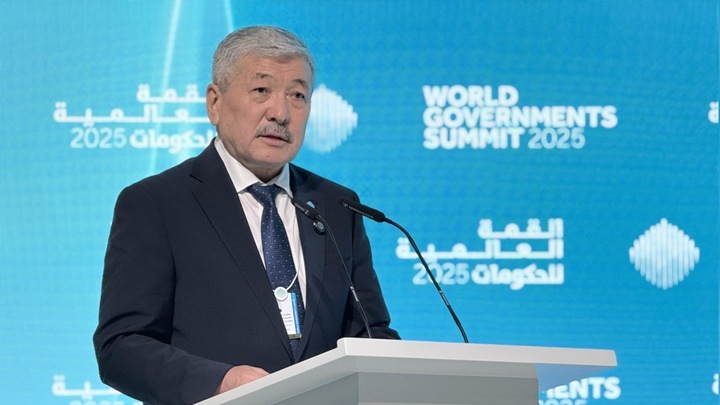The head of the Cabinet of Ministers: Kyrgyzstan relies on hydropower
At the World Government Summit in Dubai, within the framework of the forum “Emerging Global Influence”, Kyrgyzstan outlined its development strategy, focusing on hydropower. Chairman of the Cabinet of Ministers and Head of the Presidential Administration of the Kyrgyz Republic Adylbek Kasymaliev said that the country, located in the heart of Central Asia and landlocked, sees its future in increasing hydropower potential, developing transit opportunities and digitalizing public administration. Special attention is paid to hydropower as a key factor in the sustainable development of Kyrgyzstan.

In his speech at the forum, Adylbek Kasymaliyev stressed that the unique geographical position of Kyrgyzstan as a “upstream country” in the region determines its responsibility for the rational use of water resources. He noted that the hydropower potential of the republic is huge – more than 140 billion kilowatt-hours per year. This, according to the head of the Cabinet of Ministers, is enough not only to meet the domestic needs of the country, but also to serve as the most important source of water for the vast territories of neighboring Central Asian states located downstream and dependent on Kyrgyz rivers.
The central element of the environmental and energy strategy of Kyrgyzstan, as Kasymaliyev noted, is the construction of the Kambar-Ata HPP-1. According to him, this large-scale national project will generate 5.6 billion kilowatt-hours of electricity annually. In his speech, the official stressed that the commissioning of the HPP will not only ensure the energy independence of Kyrgyzstan, but will also allow exporting surplus “clean” energy to neighboring countries, thereby contributing to the reduction of the carbon footprint throughout the region and the transition to renewable energy sources. Thus, Kyrgyzstan positions itself as a responsible participant in global efforts to combat climate change.
The construction of the Kambar-Ata HPP-1 also raises certain concerns among environmentalists. It is important that the project be implemented in compliance with all necessary environmental norms and standards, with minimal impact on river ecosystems and the environment. It is necessary to conduct a thorough environmental impact assessment (EIA) and ensure transparency of the decision-making process, with the participation of the public and independent experts. Only in this case, in relation to Kyrgyzstan, it will be possible to talk about truly sustainable development and “green” energy.


